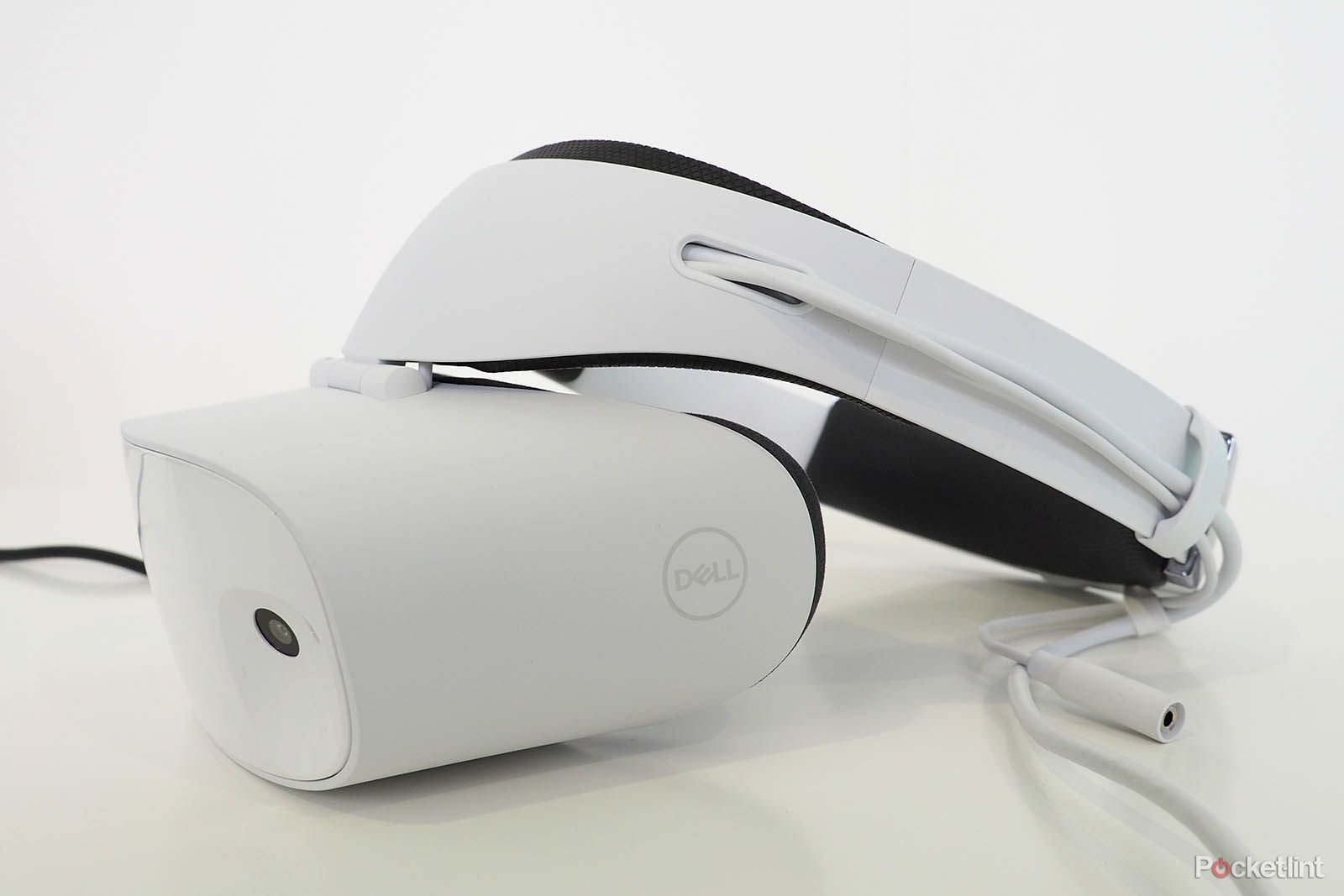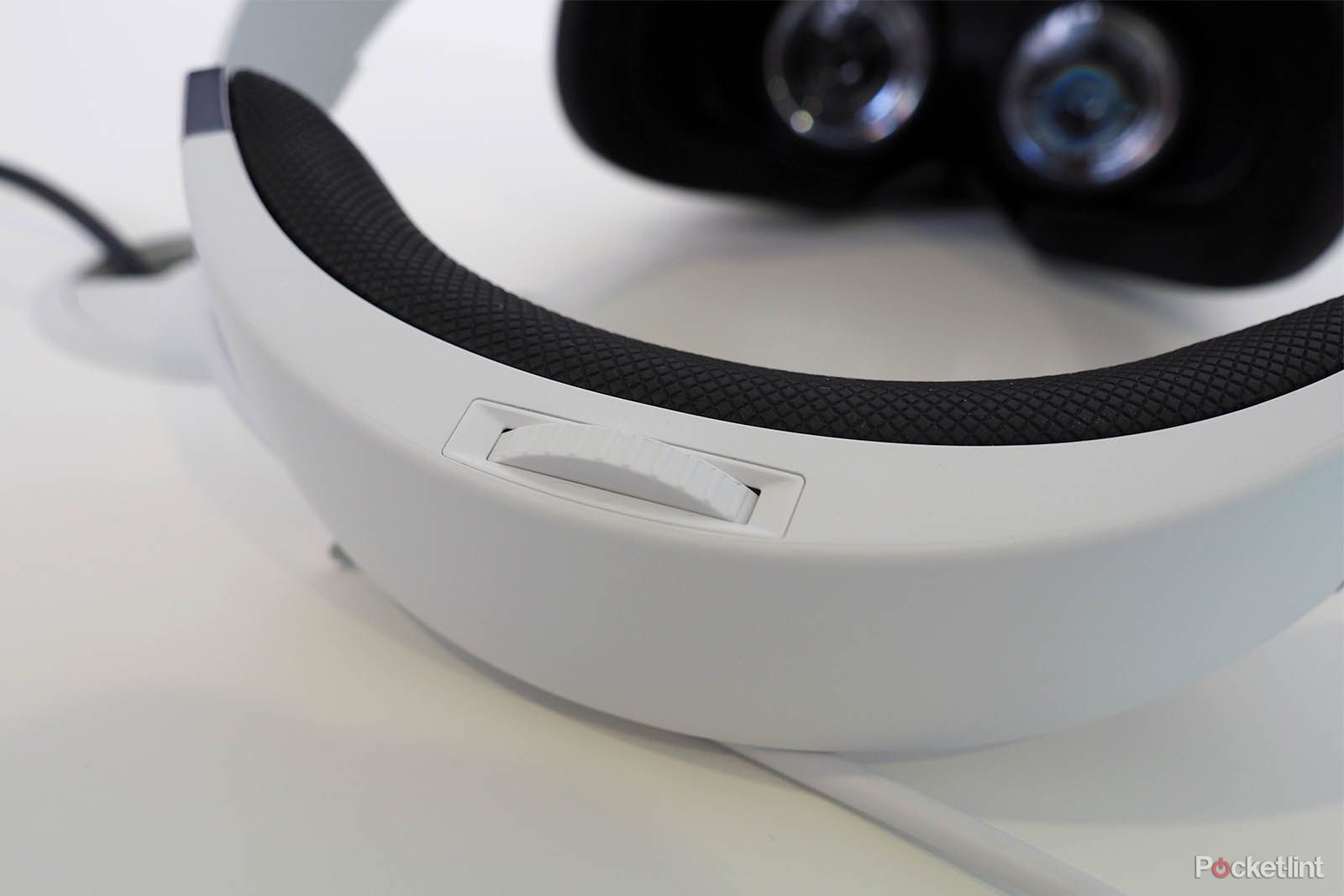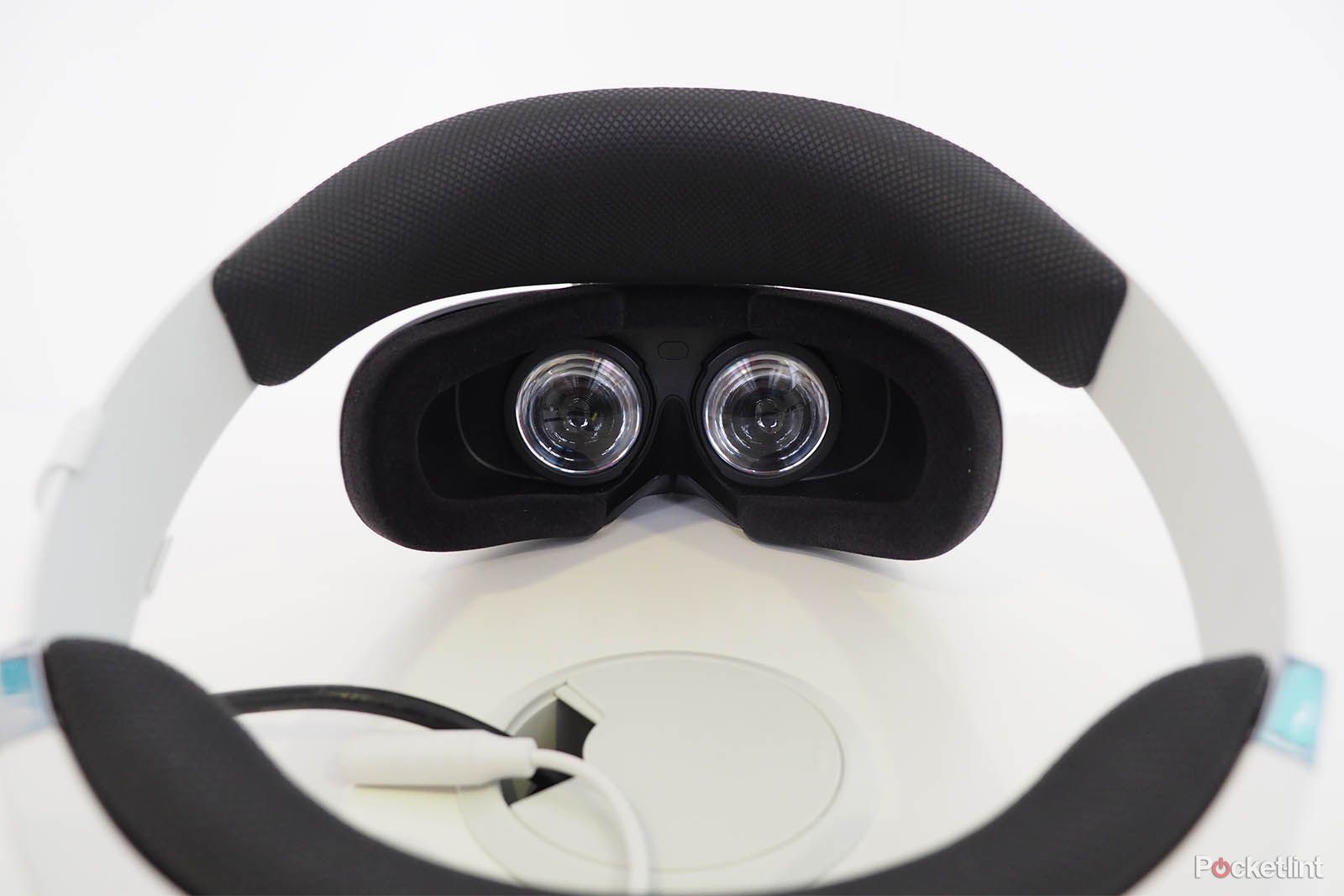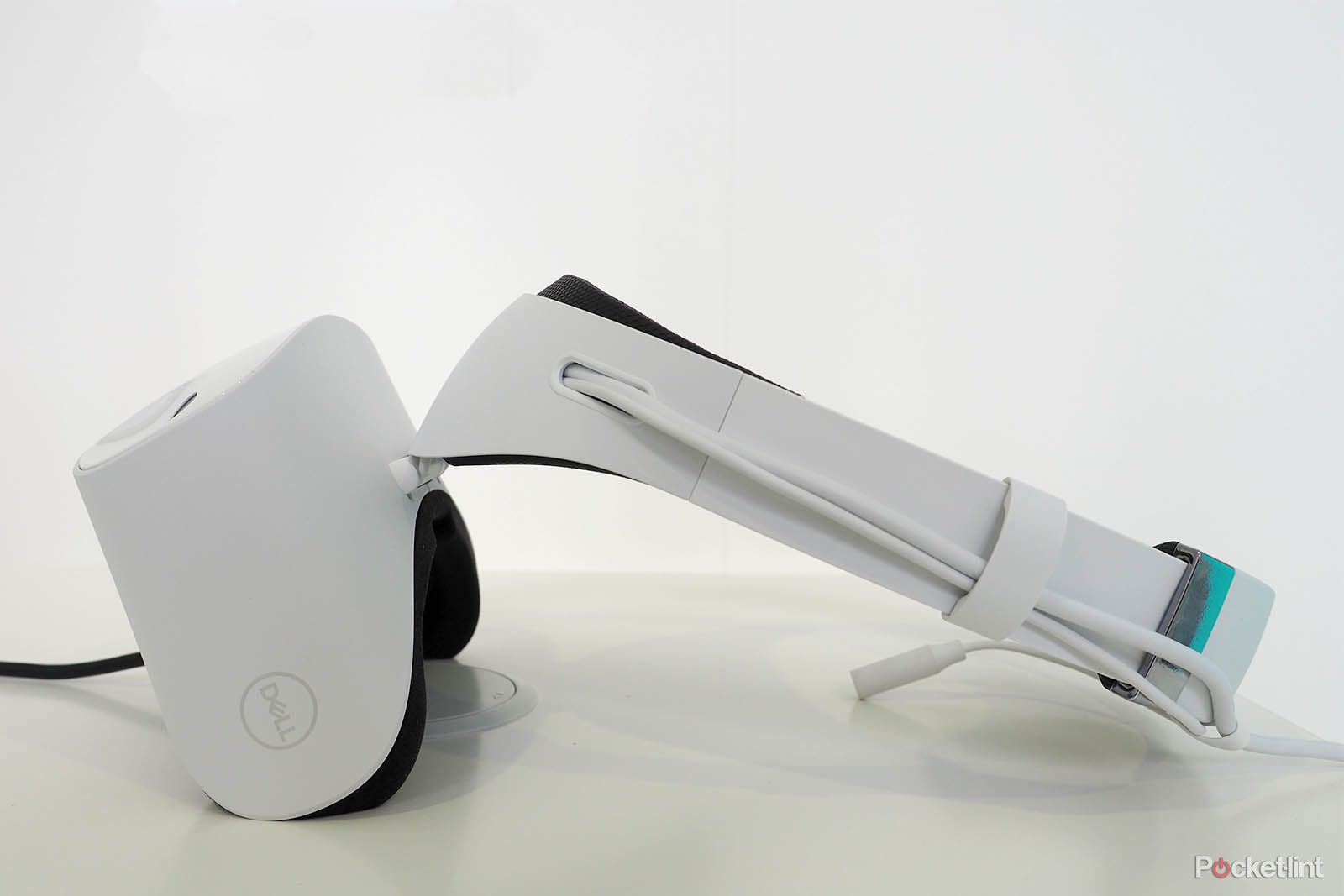The theme at this year's IFA show - the largest technology show in Europe - is all about Windows Mixed Reality, Microsoft's dive into easy-to-setup virtual reality experiences, which will debut from 17 October when a Windows 10 update arrives.
Our quick take
The Dell Visor is going to be a difficult Windows Mixed Reality experience to beat. It's cheaper than the not-as-well-made Lenovo Explorer, features design innovations such as a pop-up visor, while the comfortable counter-balanced fit ensures the highest comfort.
Add in 90Hz playback and there's the potential for Oculus Rift-rivalling quality from a standard Windows 10 laptop or PC, without the heavyweight cost. The biggest issue with the Dell Visor? That Asus' HC102 headset looks rather impressive too.
The Dell Visor is expected to be available from mid October, priced £349, including the controllers.
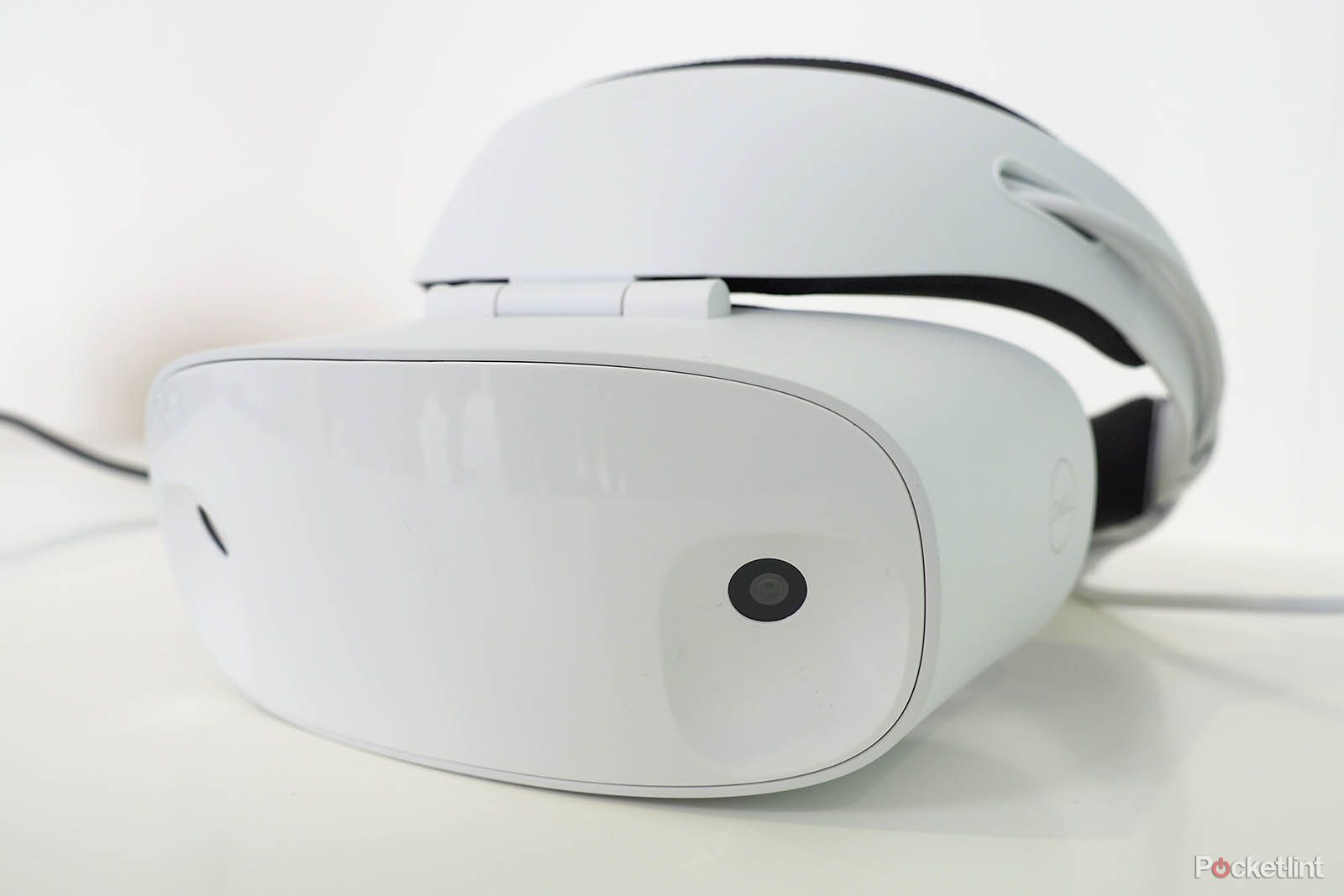
Dell Visor p
| FOR | AGAINST |
|---|---|
|
|
|
And manufacturers are showing off their wares, such as the Dell Visor, which offers the best balance of price and performance that we've yet seen in this Windows 10 headset space. How does it fit in among the competition from Acer, Lenovo, Asus and HP?
Dell Visor review: What is Mixed Reality?
But let's back up for a minute. In the world of virtual reality (VR), augmented reality (AR), how exactly does Mixed Reality (MR) fit into the equation? Well, VR is the immersion into another world via a headset, where you see none of the real world. AR is where virtual elements interact with the corresponding real-world, like a pass-through layer over the world around you.
Mixed Reality is defined differently by different sources: HTC, for instance, would cite its Vive headset as the premier example - a device which has cameras on its exterior to sense where the wearer exists within their surroundings, injecting visible objects into the virtual world if real ones enter the field of vision.
Windows Mixed Reality is a little different. The experience is fully immersive, just like VR, and while compatible devices do have cameras on their exteriors these don't pass through the real world to the wearer at any point - instead they're used for sensing surroundings for quick setup and, in the demos we've experienced thus far, that's all they do.
Point being: if you think Mixed Reality is the combination of virtual and augmented reality then think again, because it's not. Not yet, anyway.
Dell Visor review: Comfort of fit
We've seen the Acer Windows Mixed Reality and Lenovo Explorer headsets prior to the Dell Visor, both of the former offering slightly different strap systems - the Acer is a basic strap which has to be pulled over the head, the Lenovo uses a cycling helmet-style rotational wheel to tighten the band.
The Dell Visor has the best fitting of the three: it also uses a rotational wheel to loosen/tighten the headband, but this is contained within a counterweighted portion so the balance of the whole device doesn't put excessive pressure on the wearer's nose. It's a heavier headset than the Lenovo Explorer, but that's of no consequence given the balance.
In addition, Dell has added the ability to pop-up the main visor section, which is positioned on a hinge, which is really useful for seeing the real world and grabbing the controllers. No other Windows Mixed Reality offers this sensible design idea.
Our only issue with fitting is that it's key to align the centre point of the internal lenses with your own eyes, otherwise the peripheries of the image will blur. If you wear glasses then this is exaggerated, so we would recommend contact lenses if possible.
Once it's well aligned, however, the Dell solution offers a 90Hz playback, ensuring smoother visuals than the competition - only the Asus headset can match this equal-to-Oculus quality.
Dell Visor review: Connecting to Windows 10
Before wearing the headset, it has to be plugged into dual USB connections of a connecting laptop or PC. The headset then has a loose wire with a 3.5mm jack on if you wish to add headphones into the mix. Having these wires does affect use to some degree, as the constant tether to the device feels a bit like someone gripping at your head. In the future we're sure Mixed Reality will go wireless, but it's one step at a time for now.
Once plugged in, setup is quick and easy. We've only been through the setup process with an Acer headset, not this Dell one, but as all Windows Mixed Reality headsets run via a PC with Windows 10, it's a universal experience irrelevant of hardware.
It'll take no more than 10 minutes the first time, and far less once you've got the hang of it all, as there are no external sensors which need to be setup within a room (such as those necessary to place around the room for a product like HTC Vive).
Dell Visor review: Controllers
The Dell Visor is the first Windows Mixed Reality setup that we've been able to use with the two included controllers - other makers seem reluctant at this stage, as things are still quite buggy ahead of the 17 October Windows 10 update.
The fit of the controllers is great, much like those included with Oculus Rift, but there's one poorly thought-out element: the Windows button is positioned too close the where the rear of your thumb knuckle will be naturally placed, making them far too easy to press by accident. Doing so will transport you back to "Cliff House" - which is like the home base of the Windows Mixed Reality - which is infuriating if you're in the middle of a game experience.
When not hitting these buttons by accident things do work rather well. The six degrees of freedom - the ability to move freely through virtual space, with forward/backward, up/down, left/right and pitch, yaw and roll rotations - means the Dell Visor is every bit as adept as its pricier competition. And that's a big point to note about this Dell: it's £349, making it £50 cheaper than the not-as-well-built Lenovo Explorer.
The last point that's worth noting is that you don't need a beefy PC to run things. Connect Lenovo Explorer to any Windows 10 laptop and it'll happily work with what it has, no discrete graphics or high-end chipsets required (although the more powerful, the better the resulting graphics).

